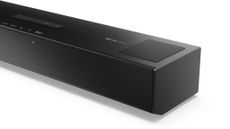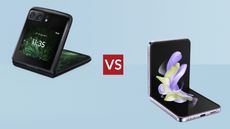Having now spent considerable time with the iPhone 12 Pro Max, we take a deeper dive into its features and how it performs.
With four models in this year’s iPhone range, there’s a choice of sizes and specs available to suit most users. The iPhone 12 Pro Max is the true flagship, though. It’s the best iPhone, even among this year's incredible crop, and is absolutely one of the best phones you can buy today. Even compared to the regular iPhone 12 Pro, the Max offers a range of upgrades, not to mention that gigantic screen.
Like the 12 Pro, the Max features the new flat-edge design, with a stainless-steel construction, a Super Retina XDR display and a textured matte glass back. It’s finished in a choice of four colors: graphite, silver, gold and pacific blue.
Inside is the new A14 Bionic processor, which is the most powerful phone processor in the world. This works alongside a four-core GPU to enable impressive performances in gaming, augmented reality and video editing. It's the same as you'll find in the iPhone 12, and is just as fast here as there.
Where this year’s iPhone Pro models stand out is in their camera systems. On the front is a 12MP TrueDepth camera for better selfie action, while the rear sports a three-lens camera array, providing you with ultra-wide, wide and telephoto options for photo and video capture.
Perhaps the biggest addition to all of this year’s range is the 5G connectivity. This offers incredible download speeds when out and about, allowing you to live stream, download and video chat without giving it a second thought… as long as you're in a supported area, of course.
The iPhone 12 Pro Max is a very expensive phone so be sure to protect it from scratches, cracks and dents with one of the best iPhone 12 cases.
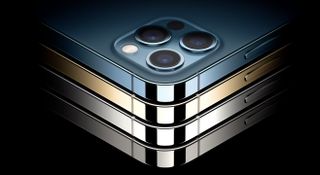
iPhone 12 Pro Max review: Price and release date
The iPhone 12 Pro Max was released on November 13, 2020, along with the iPhone 12 Mini. Prices start from $1099 / £1099 / A$1849 for the 128GB version. This is likely to be enough storage for most users, especially thanks to the phone’s ability to stream content fast.
For those that want lots of local storage or plan to shoot lots of photos and video, Apple also offers a 256GB version for $1199 / £1199 / A$2019 and a 512GB version for $1399 / £1399 / A$2369.
The base 128GB model is the same price in the US as the 64GB 11 Pro Max was on launch in 2019 and priced slightly lower in the UK and Australia. The larger storage versions are cheaper in all markets.
Both the iPhone 12 Pro and 12 Pro Max come in a choice of four colors: graphite, silver, gold and this year’s new addition, pacific blue. The blue replaces last year’s Midnight Green and is this reviewer's favorite. While the 12 also comes in a blue finish, the pacific blue on the 12 Pro models feels more premium.
This year, there’s no charger or headphones in the box, but for anyone upgrading from an older iPhone, you probably have plenty of both still lying around the house. And of course, this is designed to be used wirelessly – both for listening and charging. While you can still plug in any lightning-fitted headphones – or 3.5mm with an adapter – most Apple fans have probably upgraded to a pair of AirPods already, or at least the new cheap Beats Flex.
And for wireless charging, all iPhone 12 models are MagSafe compatible – a new magnetic charger that works much like the Apple Watch charger. MagSafe chargers are available for an extra $39 from Apple or increasingly from third parties.
iPhone 12 Pro Max review: Design and MagSafe
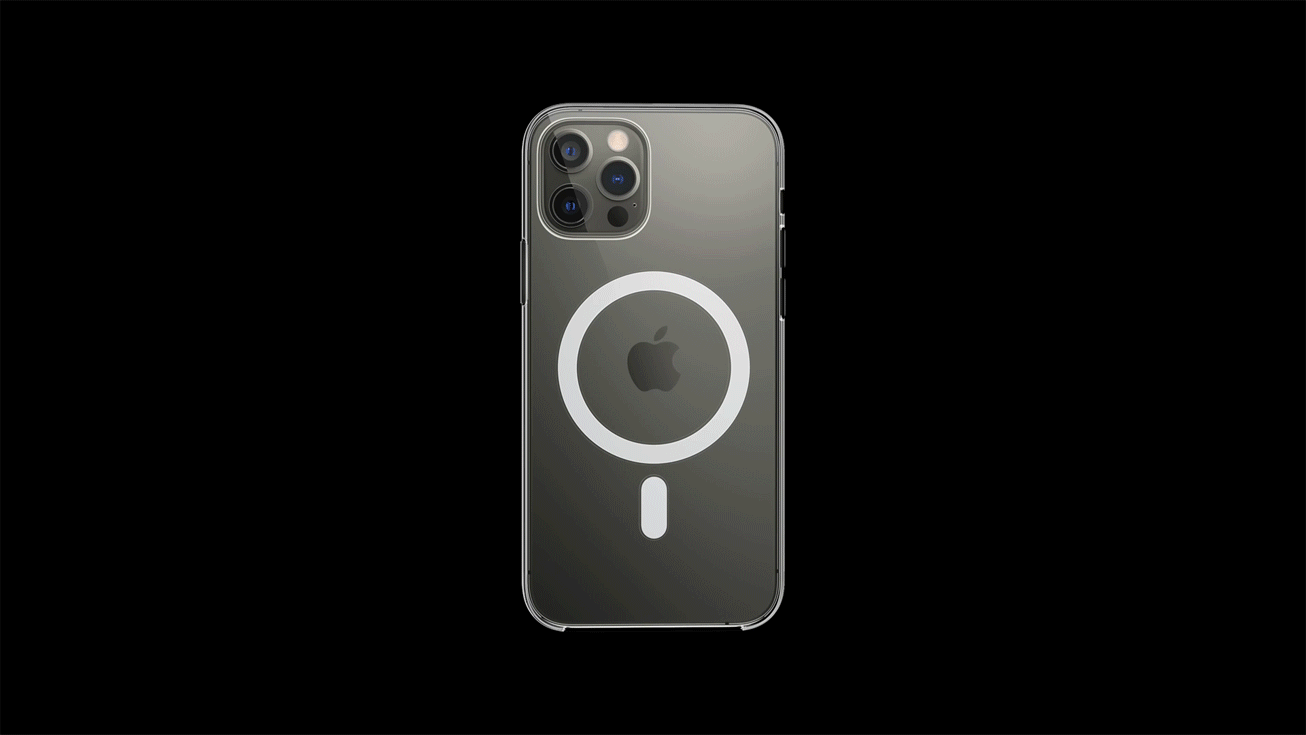
The new flat edge design of this year’s iPhone 12 models is reminiscent of the iPhone 4 design and its stainless-steel rim, which has to be one of the nicest designs of previous generations. The 12 Pro and Pro Max both feature a surgical-grade stainless steel band that is color-coded to match the textured matte glass back.
The 6.7-inch OLED display of the Pro Max is noticeably bigger than the 6.1-inch display on the 12 Pro. It’s also a step up from the iPhone 11 Pro Max, which offered a 6.5-inch screen. However, thanks to the reduced bezel, this has only meant a 0.11-inch (2.8mm) increase in length and 0.01-inch (0.4mm) increase in width from last year’s model.
This iPhone Pro Max is also tougher than ever. It has four times the drop performance on the iPhone 11, thanks to the new Ceramic Shield front glass and super-tough back glass to avoid a painful shatter that would follow smartphones of old slipping from your hand onto concrete or tile. And it’s not just dropping, reaching for the bag of rice after a spill isn’t required here, as the iPhone 12 Pro Max is IP68 rated, being water-resistant up to six meters for up to 30 mins. So even full submersion in a pool, sink or toilet bowl should no longer be game over.
Perhaps the biggest design change is the addition of MagSafe charging to the iPhone 12 Pro. As the name suggests, this uses magnets to align a compatible MagSafe charger to the back of the iPhone, providing 15W of power. This is similar to how the Apple Watch charger functions and avoids the issue of devices not charging when not lined up properly on wireless pads. Regular wireless charging is also still available with Qi wireless devices at the lower 7.5W power.
The MagSafe system can also recognize a series of accessories including cases and card wallets that snap to the back of the phone. We tried the leather MagSafe case and the MagSafe leather card wallet, which can hold up to three credit cards securely.
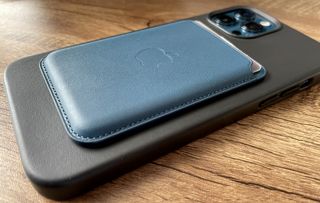
iPhone 12 Pro Max review: Screen and speakers
At 6.7 inches, this is the largest display to feature on an iPhone. With a resolution of 2778x1284 pixels, it is also the sharpest, giving it a resolution of 458ppi. Photos and video benefit from a 2,000,000:1 contrast ratio and a maximum 1,200 nits peak brightness during HDR playback, which is the same as that of the iPhone 11 Pro Max. Under typical use, expect more like 600 nits, which is great too.
The result here is a screen that you can comfortably watch, whether at home on the sofa, commuting to work on a bus or train, or further afield. Watching any kind of footage looks great but shows such as Apple TV’s Earth at Night in Color – which is both in 4K and with Dolby Vision – look truly stunning.
The 6.7-inch screen also feels natural to use in landscape mode for a number of applications in a way that the 6.1-inch iPhone 12 Pro doesn’t, such as with email (split with preview pane) or even web browsing. This also opens up more complex gaming options, such as city or empire-building sims that would otherwise need a tablet to fully enjoy.
The only thing really missing here is a 90Hz or 120Hz refresh rate. Instead, it is capped at 60Hz, like the iPhone 11 Pro. This might frustrate mobile gamers – particularly as phones such as the Samsung Galaxy S21 and OnePlus 8T both offer 120Hz displays, and more games are being optimized for higher refresh rate screens.
As with video, the iPhone 12 Pro Max supports a range of audio formats, including Dolby Atmos and Dolby Digital Plus. There’s also spatial audio playback for a true cinematic sound experience when using AirPods Pro or AirPods Max devices.
While most content is likely to be enjoyed through headphones, the iPhone 12 Pro Max does offer stereo speakers, mounted in the top and bottom of the phone. This gives a nice wide stereo effect when watching movies in landscape mode and pumps out some impressive volume.
iPhone 12 Pro Max review: Camera and video
While the physical size of the iPhone 12 Pro Max might be its most obvious differentiating factor, the camera system is the most impressive. While the three-camera array is similar to the iPhone 11 Pro Max and iPhone 12 Pro, the performance has been improved.
The standard 12MP wide-angle lens (26mm equivalent) has a wider f/1.6 aperture, compared to f/1.8 on last year’s Pro models. The 12 Pro Max also benefits from a brand-new larger sensor compared to the iPhone 12 Pro. This, combined with the aperture, results in an 87% better low light performance than the 11 Pro Max. And while the 12 Pro features optical image stabilization on the wide-angle lens, the 12 Pro Max uses a new sensor-shift OIS, that moves the sensor rather than the lens.
The 12MP ultra-wide-angle lens (13mm equivalent) provides a 120-degree field-of-view, which is 2x wider than the standard lens. This allows you to get much more into your shot, which is handy for landscapes or for dynamic street shots.
The third lens is a 12MP telephoto lens. While the telephoto lens on the iPhone 12 Pro remains almost identical to the iPhone 11 Pro models, here on the Max it gets an upgrade. Rather than the 2x zoom f/2.0 (52mm equivalent), it has a longer 2.5x zoom f/2.2 (65mm equivalent). While this is not as long as either of the tele lenses on the Samsung S21 Ultra, the 65mm length is a really nice crop for portraits and will be extremely popular with photographers and videographers. The telephoto lens also benefits from optical stabilization and there’s a 5x digital zoom if you want to go even closer.
The Portrait shooting mode has been improved and takes advantage of both the wide and telephoto lenses. Night mode now also functions with the ultra-wide lens and the front TrueDepth camera, and Deep Fusion – Apple’s pixel-by-pixel image analysis – works on all cameras. HDR photo mode has also been upgraded with Smart HDR 3 for more true-to-life images.
Photos can be captured in either JPEG or the HEIF formats and for the first time on the 12 Pro models, in Apple ProRAW. This is a DNG format that retains all of the information from the sensor, but also takes advantages of Apple's HDR and Deep Fusion techniques. ProRAW pics can be easily edited in-camera or in an external editor, such as Photoshop, for even greater control over the image.

From the same spot using the ultra-wide (left), wide (center) and telephoto (right).

You can create dynamic landscapes using the ultra-wide lens.

Using the Portrait mode on wide-angle (left) and telephoto (right).

Using the front TrueDepth camera with Portrait mode (left) and High Key portrait effect (right).

The iPhone 12 Pro Max handles exposure very well, even with high contrast scenes like this. Taken using the ultra-wide lens.

Taking the Apple ProRAW .DNG file into a photo editor, such as Photoshop, gives you even more control over your images.
The resulting images not only look great on the iPhone screen but on closer inspection on a desktop, hold up extremely well. There’s great edge-to-edge sharpness and spot-on exposure, even in high contrast scenes. When viewed at 200% you can see a slight haloing on areas of contrast and some compression in the HEIF files but these are really minor.
The portrait mode does a great job of isolating the face, keeping it sharp and well exposed while blurring the background. The cutouts for the stage light effects still aren’t perfect but the high-key effect is really effective.
The addition of the LiDAR scanner provides the iPhone Pro 12 models to deliver accurate augmented reality experiences by creating a depth map. It also helps the camera system to provide up to six times faster autofocus in low light conditions, allowing for night portraits.
The front camera remains much the same as in the iPhone 11 Pro: a 12MP with f/2.2 aperture and a retina flash. It does, however, now support smart HDR 3 capture for still images, night mode and deep fusion for image optimization, and HDR video recording with Dolby Vision.
Videographers also benefit from the new three lens arrangement, as well as the benefits that come from the stabilization and low light abilities. The biggest change for video is the native support for 10-bit HDR video, which is converted to Dolby Vision for replay or output. This provides an even more professional-looking video at up to 4K 60fps.
iPhone 12 Pro Max reviw: 5G and performance
The much-anticipated introduction of 5G to the iPhone this year is likely to be the feature that prompts many to upgrade. Here in the US, all four iPhone 12 models feature both the sub-6GHz (or regular) 5G as well as the super-fast mmWave 5G. In the UK and Australia, mmWave is not yet available, and so the iPhone models don’t support it.
Regular 5G offers speeds of 100 to 400 Mbps, which is still considerably faster than many home wireless connections. In the US, AT&T, Verizon and T-Mobile all offer the faster mmWave 5G in major US cities, with potential speeds of up to 1.8Gbps.
On T-Mobile’s standard 5G in Chicago, I was able to get up to 160Mbps and was able to easily stream 4K video content on the go. However, even on LTE (4G) I was able to achieve a speed of 106Mbps.
The iPhone 12 Pro Max is equally fast for general performance, courtesy of its A14 Bionic chip. This features six cores (two performance, two custom efficiency) making it Apple’s fastest CPU to date in a smartphone. It also features a four-core GPU and a 16-core Neutral Engine. All of this results in a seamless user experience; apps open instantly and the gameplay is silky smooth.
Even memory intense apps, such as the photo effect Prisma, run considerably faster than on older iPhones. While all this is to be expected from the operating system on a new phone, the real test will be how it handles future releases of Apple’s OS a year or two from now.
iPhone 12 Pro Max review: Battery life
When the iPhone 12 Pro Max battery does get low, there are a number of choices for recharging. Using Apple’s 20W adapter it will reach 50% charge in around 30 mins and a full charge in around 1.5 hours. Using the MagSafe charger, which offers 15W charging, it takes around three hours for a full charge. Using older 10W or 12W USB chargers, or 7.5W Qi wireless chargers, will take longer.
While the iPhone 11 Pro Max offered a significant bump in battery life compared to the iPhone XS Max, the new 12 Pro Max offers identical figures to its former: 20 hours of video playback (12 hours streamed) and up to 80 hours of audio playback. These figures are significantly better than those of the iPhone 12 Pro, beating it on video playback by three hours and audio playback by 15 hours. This is thanks to a larger 3,678mAh battery and means that, even with a decent amount of use, you can easily squeeze a second day out of it.
While this isn’t the best battery life we’ve seen on a smartphone, it’s still a decent performance and makes the iPhone 12 Pro Max the number one choice for Apple users seeking extra usage time.
iPhone 12 Pro Max review: Verdict
The iPhone 12 Pro Max is more than worthy of its flagship status. While this year’s iPhone 12 Pro model is also a top model, the benefits of the larger screen, premium camera system and better battery life make the Pro Max an obvious choice for those that demand the best.
While the 5G connectivity, A14 chip and screen size are impressive, for us the true highlights of the 12 Pro Max lie in its camera system. Having the ability to edit in camera and still output in DNG format means you can really do more with your still shots. And for video, the 12 Pro Max offers a compact device capable of professional output.
While the move to MagSafe won’t have a huge effect on most iPhone users just yet, it is an interesting innovation that has huge potential for the future of wireless charging. We still miss the MagSafe on the MacBook Pro and while that solved the issue of tripping on a wire, MagSafe on the iPhone offers new solutions for holding the device in place for car charging, add-on accessories and beyond.
iPhone 12 Pro Max review: Also consider
If you want something a little smaller in the hand – and lighter on the pocket – the iPhone 12 Pro is identical to the 12 Pro Max in many of its features. The camera arrangement still offers the three lenses, albeit with a slightly shorter telephoto, a smaller sensor on the wide angle and just optical rather than sensor-shift stabilization. It’s also a little shorter on battery life but still delivers decent audio and video times. Read our full iPhone 12 Pro review here.
For those that are more casual with their camera needs, the iPhone 12 lacks the telephoto lens but offers the same wide and ultra-wide cameras as the 12 Pro. Plus it still has the same A14 chip, ceramic shield glass and water resistance as the pro models. Read more about it in our iPhone 12 review.
Users that aren’t tied to the Apple system have a wide range of Android phones to choose from. Our best picks include the OnePlus 8 Pro, which features a 6.78-inch AMOLED screen with 120Hz refresh, a four-camera array, IP68 weatherproofing and that all important 5G. The other option has to be the Samsung Galaxy S21 Ultra. This has a 6.8-inch screen with 120Hz refresh rate, a pinhole 40MP front camera and a quad-camera rear array, including a 108MP main camera. It also supports the Samsung S Pen stylus.





